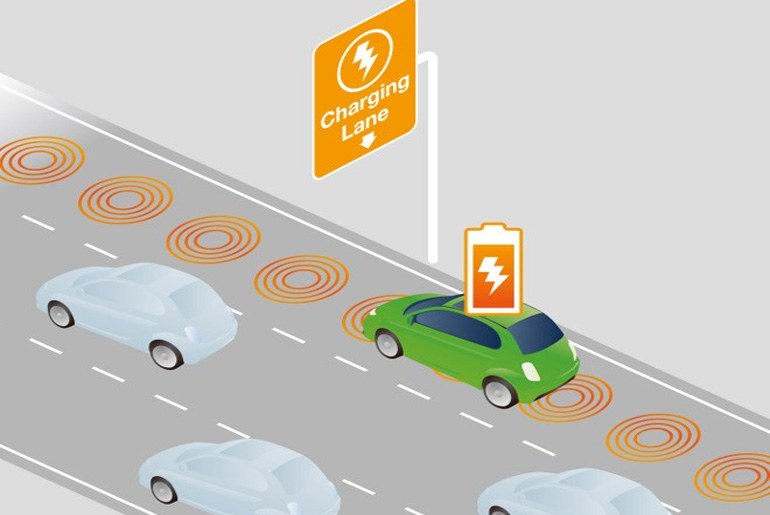As electric vehicles (EVs) become an increasingly integral part of our transportation landscape, the search for innovative charging solutions is paramount to their success. One such groundbreaking technology is Dynamic Wireless Power Transfer (DWPT) for moving EVs. This system promises to alleviate range anxiety, reduce charging downtime, and enhance the efficiency of electric transportation by enabling vehicles to charge wirelessly while in motion. This article delves into the concept of DWPT, its working principles, benefits, challenges, and future prospects.
Understanding Dynamic Wireless Power Transfer
Dynamic Wireless Power Transfer (DWPT) involves the transfer of electrical energy from the power grid to an electric vehicle while it is moving. Unlike static wireless charging, which requires the vehicle to be stationary over a charging pad, DWPT uses a series of coils embedded in roadways to create an electromagnetic field. As the EV drives over these coils, the receiver coils in the vehicle’s undercarriage capture the energy and convert it into electrical power to charge the battery.
How DWPT Works
- Inductive Coupling: DWPT systems operate on the principle of inductive coupling. Primary coils embedded in the road generate an alternating electromagnetic field when an alternating current flows through them. Secondary coils in the EV, aligned with the primary coils, induce a current, thereby transferring energy from the road to the vehicle.
- Power Electronics: Both the roadway infrastructure and the vehicle are equipped with advanced power electronics to manage the energy transfer. These systems ensure that the power is efficiently converted and transferred, optimizing the charging process.
- Communication Systems: DWPT requires a robust communication system between the vehicle and the road infrastructure to synchronize the energy transfer. This system ensures that energy is transferred only when an authorized EV is present and that the transfer is efficient and safe.
Benefits of DWPT
- Elimination of Range Anxiety: One of the primary barriers to EV adoption is range anxiety – the fear of running out of battery before reaching a charging station. DWPT addresses this by providing a continuous energy source, allowing EVs to travel long distances without the need for frequent stops.
- Reduced Charging Downtime: With DWPT, the need for lengthy charging sessions is significantly reduced. Vehicles can charge while on the go, improving operational efficiency, particularly for commercial fleets and public transportation systems.
- Smaller Battery Packs: Continuous energy transfer allows for the use of smaller, lighter battery packs in EVs. This not only reduces the cost and weight of the vehicle but also enhances its efficiency and performance.
- Infrastructure Optimization: By integrating DWPT into existing roadways, the need for extensive charging station networks is diminished. This can lead to more efficient use of space and resources.
Challenges and Considerations
- Infrastructure Costs: The implementation of DWPT requires significant investment in road infrastructure. Embedding coils into roadways and installing the necessary power and communication systems can be costly and time-consuming.
- Standardization: For DWPT to be widely adopted, industry standards need to be established to ensure compatibility between different vehicle manufacturers and infrastructure providers.
- Energy Efficiency: While DWPT is highly efficient, some energy loss is inevitable during the transfer process. Ongoing research aims to minimize these losses and improve the overall efficiency of the system.
- Safety Concerns: The presence of electromagnetic fields in public roadways raises safety concerns. It is crucial to ensure that these fields do not pose health risks to humans or interfere with other electronic devices.
- Maintenance and Durability: The coils and other components embedded in roadways must be durable enough to withstand the wear and tear of constant vehicular traffic. Regular maintenance will be essential to ensure the system’s longevity and reliability.
Current Developments and Pilot Projects
Several pilot projects around the world are exploring the feasibility of DWPT. For example:
– ElectReon: This Israeli company has been testing DWPT technology on public roads in Tel Aviv and Sweden. Their projects aim to demonstrate the practical application and benefits of dynamic wireless charging for public transportation and logistics vehicles.
– Stuttgart, Germany: The University of Stuttgart has been involved in developing and testing DWPT systems, focusing on optimizing the technology for urban environments.
– Michigan, USA: The state of Michigan has announced plans to develop the first wireless charging infrastructure on a public road in the United States, aiming to pave the way for broader adoption of DWPT.
Future Prospects
The future of DWPT looks promising, with ongoing research and development poised to address current challenges and enhance the technology. Key areas of focus include:
- Improving Efficiency: Continued advancements in materials and power electronics will help improve the efficiency of energy transfer, making DWPT more viable.
- Cost Reduction: As the technology matures and scales up, the costs associated with DWPT infrastructure are expected to decrease, making it more accessible for widespread adoption.
- Integration with Renewable Energy: Integrating DWPT with renewable energy sources, such as solar and wind, can further enhance its sustainability. This combination can create a seamless, green energy ecosystem for transportation.
- Smart Grid Compatibility: DWPT systems can be integrated with smart grid technologies to optimize energy distribution and management, enhancing the overall efficiency and reliability of the power grid.
Conclusion
Dynamic Wireless Power Transfer represents a transformative advancement in EV charging technology. By enabling vehicles to charge while in motion, DWPT addresses critical issues of range anxiety and charging downtime, paving the way for more efficient and sustainable electric transportation. While challenges remain, ongoing research, pilot projects, and technological advancements are steadily driving this innovative solution towards mainstream adoption. As we move towards a greener future, DWPT has the potential to revolutionize the way we think about energy and mobility, making electric vehicles more accessible and practical for everyone.

